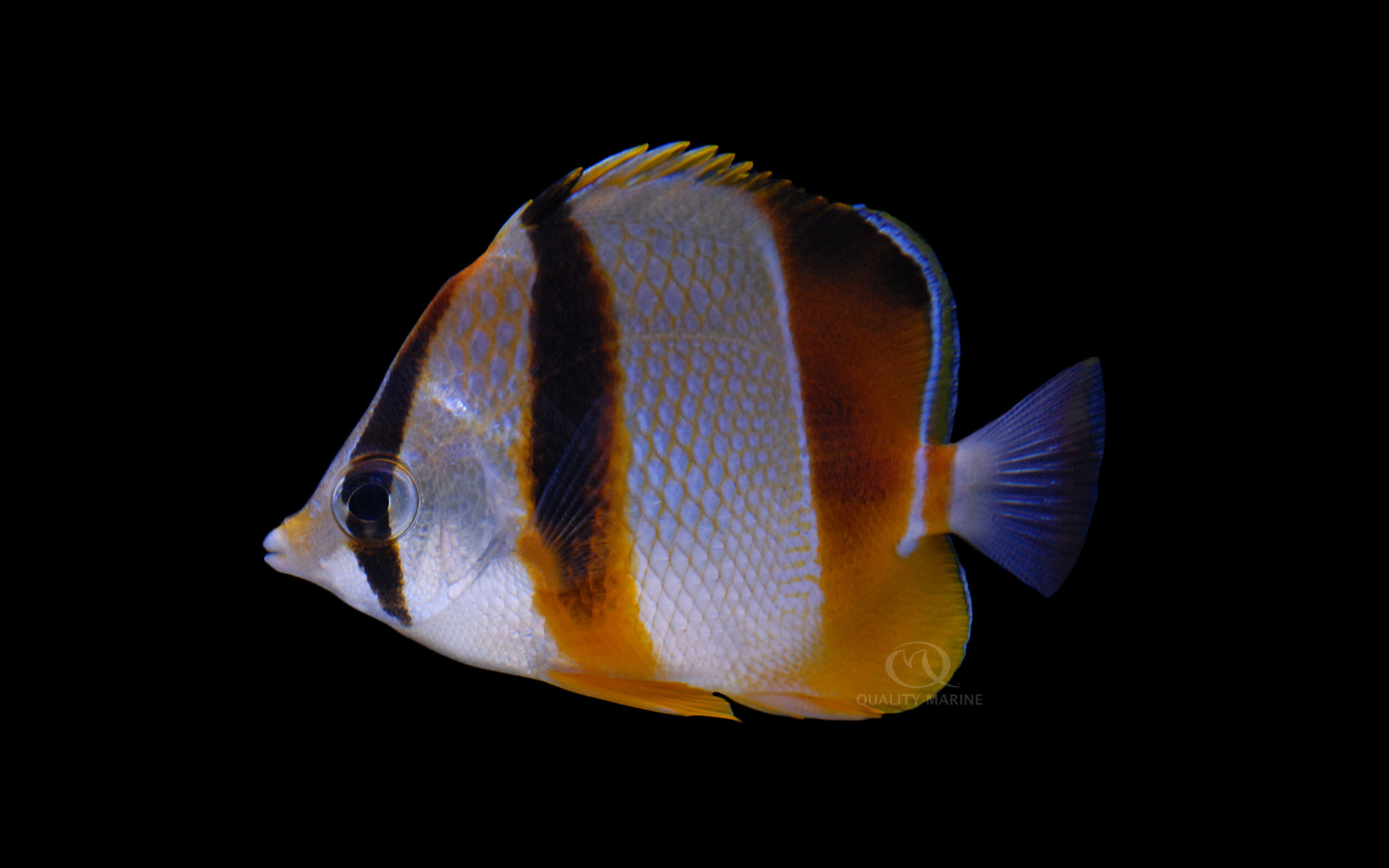Nothing Humorous about Humoralis

Chaetodon humeralis is most commonly called the “Three Banded Butterflyfish” (or a translation of that) pretty much universally the world round. They are a common fish in their natural range which is confined to the shallow tropical and subtropical waters of the eastern Pacific ocean. They are found as far north as Southern California all the way down to Peru and the Galapagos Islands. They are frequently found in mixed schools with the Eastern Spadefish (Chaetodipterus zonatus) with whom they bear a passing resemblance.
In the wild these Butterflyfish will usually be four to six inches long, and a similar length is commonly reached in the home aquarium. The record fish is a little over 10 inches long! They form monogamous pairs for breeding, however as of this writing, this hasn't been documented in captivity. These pairs are difficult to maintain without aggression in all but the largest home aquariums, though outside of this territorial aspect with con-specifics, Chaetodon humeralis is a peaceful fish to keep, even with other species of Butterflyfish.
Keeping some Butterflyfish is challenging as many of them have very specific diets, which is not the case with Three Bandeds. Their wild diet consists of a variety of algae, corals (yes, coral, we will come back to that later), sponges and other invertebrates. While this diet obviously makes them a bad choice for reef enthusiasts, it does lend itself the fish quickly adopting a captive diet. In house, we feed a mix of small meaty foods fed simultaneously with a high quality pellet which they learn to eat quickly. Even the pickiest specimens can generally can be induced to captive feeding with irresistible foods like Cockle in Shell, Nutramar Ova etc. Like all grazing fish, a sizeable portion of their diet should always be either live or dried algae and we commonly feed them Nutramar's dried algae products which they love to pick on. When thinking about décor, an emphasis should be placed on current and open space for them to swim and get exercise in and as such, they will do best in aquariums with longer footprints and lots of flow. We suggest 100+ gallons and 5 or more feet in length for happy and healthy fish at grow out. They are not picky about temperature, though as with all aquarium fish, stability of whatever temperature you settle on is important.
Three Banded Butterfly fish have an inclination toward picking at and eating clams and tubeworms, but they will also pick at and occasionally consume corals in the home aquarium. However, they do very well in any tank that isn't housing these types of animals. If you have just such a tank, then this Butterfly may be perfect for your tank. They are a stunningly stark fish once they grow out, with silvery pearl scales and nearly jet black bars running vertically; pictures just do not do this fish justice! Head over to your LFS and ask them about sustainably harvested Chaetodon humeralis from Quality Marine today!